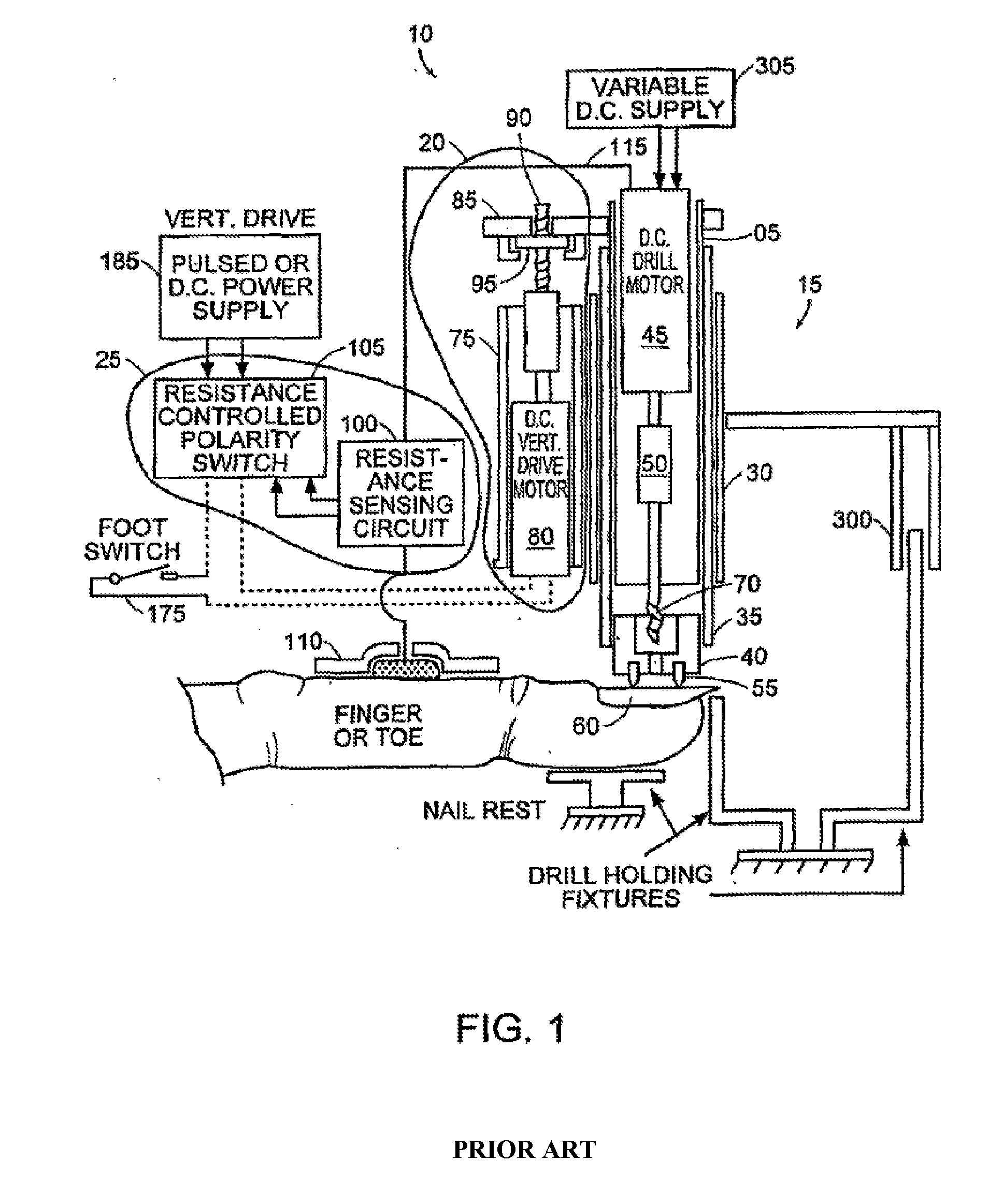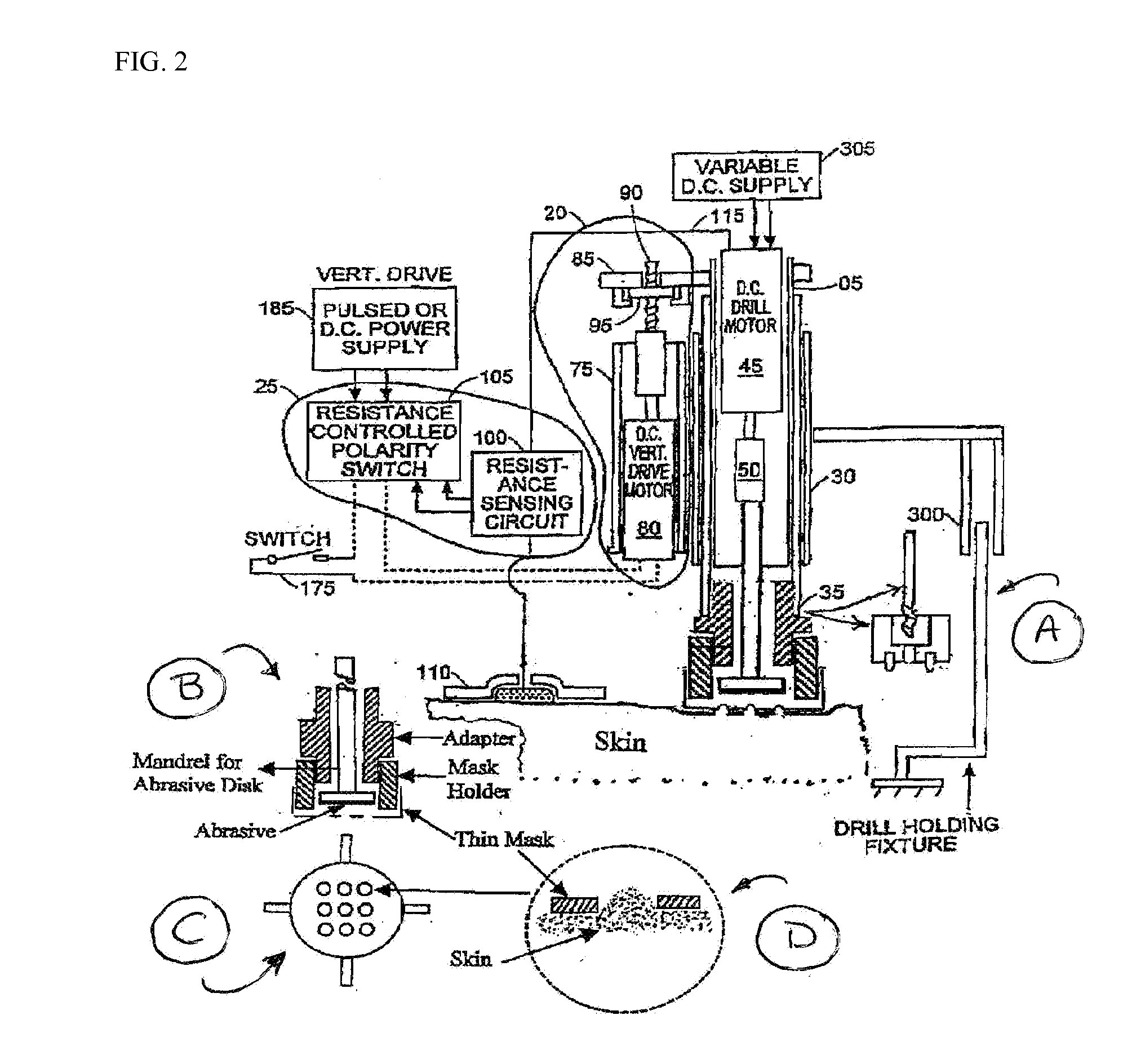Method and apparatus for the formation of multiple microconduits
a microconduit and microconducting technology, applied in the field of multiple microconduits, can solve the problems of slow passive transdermal drug delivery method, difficult control, and low rate of therapeutic molecules transport through the stratum corneum, and achieve the effect of improving the transdermal drug delivery and limiting the depth of abrasion
- Summary
- Abstract
- Description
- Claims
- Application Information
AI Technical Summary
Benefits of technology
Problems solved by technology
Method used
Image
Examples
examples
[0065]In considering how to make multiple microconduits through the stratum corneum simultaneously, the idea of sanding off at least a portion of the stratum corneum was considered. Unlike the Microscission System (see, U.S. Patent No. 6,706,032, incorporated herein by reference) in which tiny, sharp microscopic aluminum oxide particles in a gas stream are used to cut bits of tissue that are carried away by the gas flow, this concept arises from the use of an abrasive, for example, sandpaper with hard, sharp particles adhered to it. Since the stratum corneum is fairly dry, somewhat hard and thin, sliding sandpaper over it will abrade it—as opposed to other tissues that are hydrated, softer to very soft and thus move around under abrasive particles moving on them. In fact, using sandpaper or similar abrasives to remove the stratum corneum is one standard technique in dermatology and transdermal absorption work.
[0066]Knowing the waterbed or pillow-like nature of the epidermis and derm...
PUM
 Login to View More
Login to View More Abstract
Description
Claims
Application Information
 Login to View More
Login to View More - R&D
- Intellectual Property
- Life Sciences
- Materials
- Tech Scout
- Unparalleled Data Quality
- Higher Quality Content
- 60% Fewer Hallucinations
Browse by: Latest US Patents, China's latest patents, Technical Efficacy Thesaurus, Application Domain, Technology Topic, Popular Technical Reports.
© 2025 PatSnap. All rights reserved.Legal|Privacy policy|Modern Slavery Act Transparency Statement|Sitemap|About US| Contact US: help@patsnap.com



